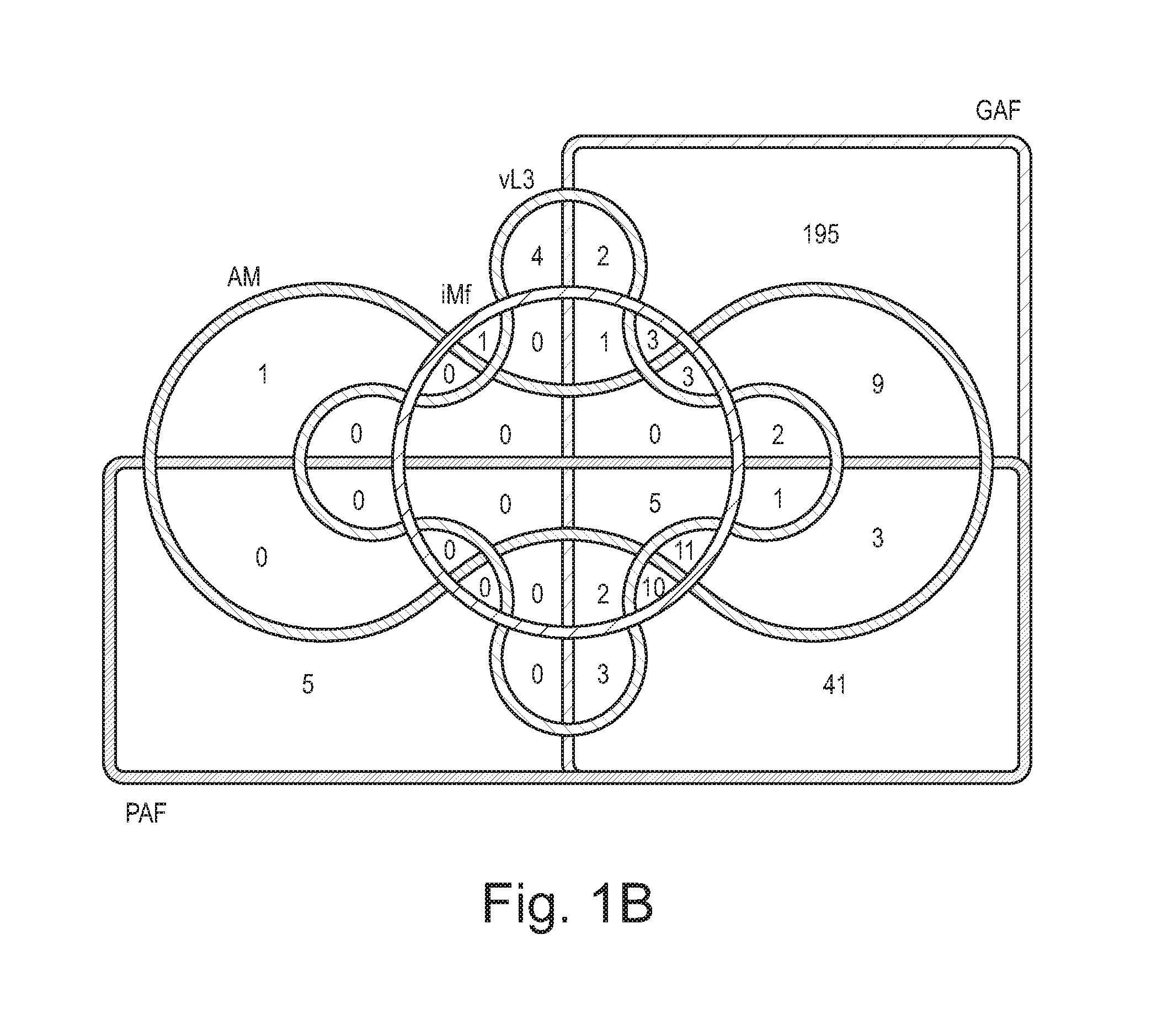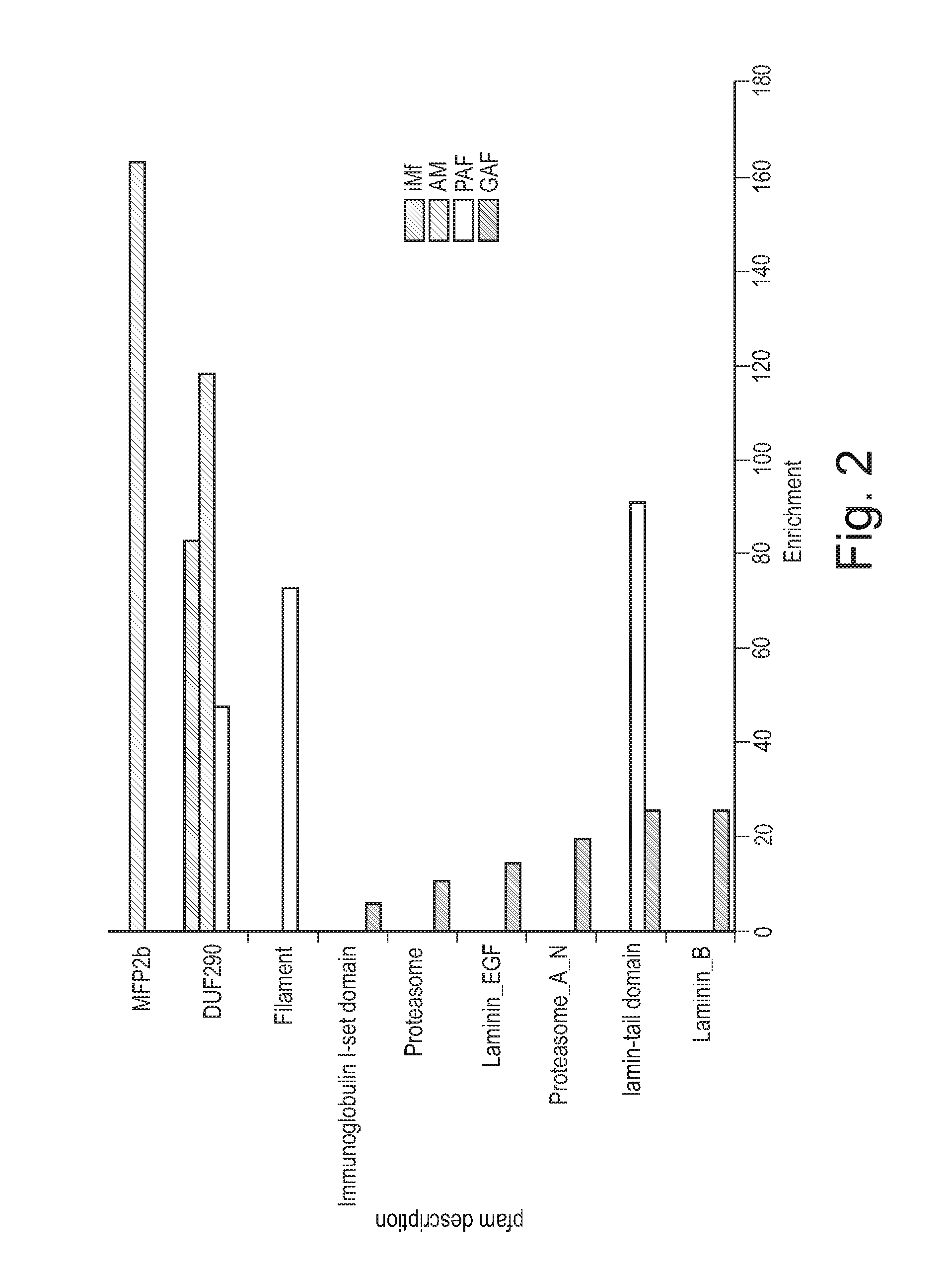Filarial nematode vaccines, polypeptides, and nucleic acids
a technology of filarial nematode and vaccine, applied in the direction of immunological disorders, peptide sources, antibody medical ingredients, etc., can solve the problems of inability to develop vaccines, inability to effectively treat filarial parasites, etc., and achieve the effect of reducing the risk of infection and preventing infection
- Summary
- Abstract
- Description
- Claims
- Application Information
AI Technical Summary
Benefits of technology
Problems solved by technology
Method used
Image
Examples
Embodiment Construction
Definitions
[0016]For the avoidance of doubt, definitions will now be provided in respect of certain terms used in the description of the present invention.
“ShK Domain of a Filarial Nematode Protein”
[0017]Filarial nematodes (those that belong to the superfamily Filarioidea) are those most commonly responsible for diseases in humans, and to a lesser extent, other animal hosts. A good deal of information is available regarding the proteome of filarial nematodes.
[0018]ShK domains, which are so called due to their similarity to the Stichodactyla toxin produced by the sea anemone Stichodactyla helianthus, contain six cysteine residues with a characteristic spacing. ShK domains present in an amino acid sequence are readily identified using a bioinformatics approach. For example, they are defined in the Pfam database by the identifier “PF01549” and in the InterPro database by the identifier “IPR003582”.
[0019]The inventors have found that proteins from filarial nematode species that vary qui...
PUM
| Property | Measurement | Unit |
|---|---|---|
| swelling | aaaaa | aaaaa |
| resistance | aaaaa | aaaaa |
| density | aaaaa | aaaaa |
Abstract
Description
Claims
Application Information
 Login to View More
Login to View More - R&D
- Intellectual Property
- Life Sciences
- Materials
- Tech Scout
- Unparalleled Data Quality
- Higher Quality Content
- 60% Fewer Hallucinations
Browse by: Latest US Patents, China's latest patents, Technical Efficacy Thesaurus, Application Domain, Technology Topic, Popular Technical Reports.
© 2025 PatSnap. All rights reserved.Legal|Privacy policy|Modern Slavery Act Transparency Statement|Sitemap|About US| Contact US: help@patsnap.com



